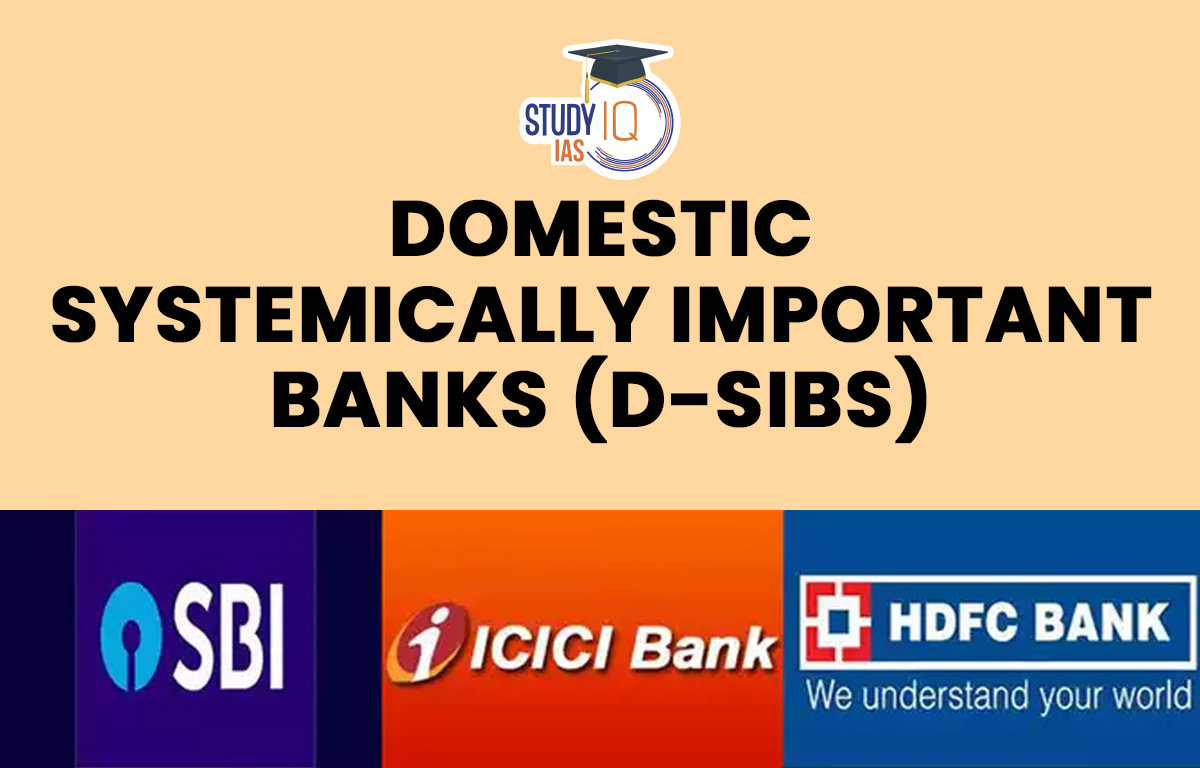Table of Contents
Context: The failure of Silicon Valley Bank in the US raises questions about the safety of banks in India, especially the domestic systemically important banks (D-SIBs).
Domestic Systemically Important Banks Background
- India remained a safe haven during the 2008 global financial crisis, with domestic banks, backed by sound regulatory practices, showing strength and resilience.
- A decade and a half on, Indian banks remained unaffected by the failure of Silicon Valley Bank (SVB) in the US last week, despite the global interconnectedness in the financial sector.
What is the basis for the confidence in the resilience of Indian banks?
- Different balance sheet structure: A reason why an SVB-like failure is unlikely in India is that domestic banks have a different balance sheet structure, where bulk withdrawal of deposits is not allowed.
- Deposits from households: A major portion of bank deposits in India comes from household savings, unlike the US, where a large portion of bank deposits are from corporates.
- Public sector dominance: A large chunk of Indian deposits is with public sector banks, and most of the rest is with very strong private sector lenders such as HDFC Bank, ICICI Bank, and Axis Bank.
- Government support: The Indian government has always stepped in when banks have faced difficulties, giving customers assurance about the safety of their savings.
- The rescue of Yes Bank is a prime example of the government and regulators’ commitment to protecting depositors’ money.
What are Domestic Systemically Important Banks (D-SIBs)?
- A D-SIB is a bank that is considered to be so important to the financial system that its failure could cause significant disruption.
- These banks are perceived as banks that are ‘Too Big To Fail (TBTF)’ because of their size, cross jurisdictional activities, complexity and lack of substitute and interconnection.
- Origin of the concept: The concept of D-SIBs originated after the 2008 global financial crisis.
- The crisis which highlighted the need to identify and regulate banks that pose a potential risk to the stability of the financial system.
- G-SIBs: The Financial Stability Board (FSB), in consultation with the Basel Committee on Banking Supervision (BCBS) and national authorities, has identified Global Systemically Important Banks (G-SIBs) since 2011.
- In line with the G-SIBs, the Reserve Bank of India (RBI) identified Indian banks that are important to the country’s financial system and designated them as D-SIBs.
About the Financial Stability Board (FSB)
- It is an international body that monitors and makes recommendations about the global financial system.
- It was established in 2009. India is a member.
About the Basel Committee on Banking Supervision (BCBS)
- It is an international committee of banking supervisors and central bankers that was established by the central bank governors of the G10 countries in 1974.
- The BCBS is headquartered in Basel, Switzerland and currently has 45 members from 28 jurisdictions, including India,
The RBI’s Framework for handling Domestic Systemically Important Banks (D-SIBs)
- On July 22, 2014, the Reserve Bank of India (RBI) published the Framework for handling Domestic Systemically Important Banks (D-SIBs). Effective in 2015.
- The D-SIB framework mandates that the RBI reveal the names of D-SIBs and categorize those institutions appropriately based on their Systemic Importance Scores (SISs).
- How does RBI select D-SIBs?
- The RBI follows a two-step process to assess the systemic importance of banks.
- First, banks are selected based on their size as a percentage of GDP, with those having a size beyond 2% of GDP being included in the sample.
- Once the sample of banks is selected, a detailed study to compute their systemic importance is initiated.
- Based on a range of indicators, a composite score of systemic importance is computed for each bank. Banks that have a systemic importance above a certain threshold are designated as D-SIBs.
- Next, the D-SIBs are segregated into buckets based on their systemic importance scores, and subjected to a graded capital requirement.
- A D-SIB in the lower bucket will attract a lower capital charge, and a D-SIB in the higher bucket will attract a higher capital charge.
- Which banks are classified as D-SIBs currently?
- RBI has classified SBI, ICICI Bank, and HDFC Bank as D-SIBs.
- Requirements to be followed by the D-SIBs:
- Higher capital conservation buffer: D-SIBs are required to maintain a higher capital conservation buffer in addition to the capital conservation buffer required for all banks under Basel III norms. The buffer ranges from 0.20% to 0.80% of their total risk-weighted assets (RWAs), depending on the bank’s systemic importance.
- Higher risk-weighted assets (RWAs): D-SIBs are required to maintain higher RWAs compared to other banks to reflect their systemic importance. This is meant to ensure that D-SIBs have sufficient capital to absorb potential losses arising from their high systemic importance.
- Higher supervisory oversight: The RBI conducts a higher level of supervisory oversight on D-SIBs compared to other banks.
- Countercyclical capital buffer: D-SIBs are required to maintain a countercyclical capital buffer (CCyB) of up to 2.5% of their RWAs, depending on the prevailing macroeconomic conditions. The CCyB is meant to absorb losses during periods of systemic stress.
- Additional Common Equity Tier 1 (CET1) requirement: This was in addition to the capital conservation buffer. It means that these banks have to earmark additional capital and provisions to safeguard their operations.


 Daily Quiz 11 July 2025
Daily Quiz 11 July 2025
 Operation Baam: Baloch Separatist Group ...
Operation Baam: Baloch Separatist Group ...
 Article 326 and Electoral Roll Revision ...
Article 326 and Electoral Roll Revision ...





















